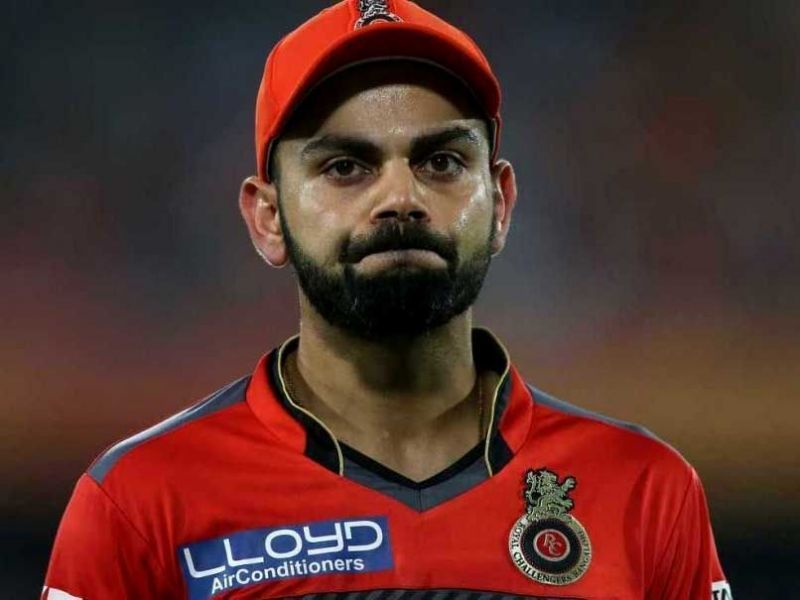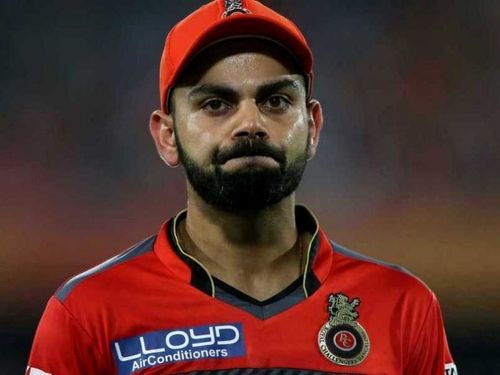
IPL 2018: Everything that’s wrong with the new RCB squad

The Royal Challengers Bangalore have boasted of a formidable line-up for several years and have grabbed up several match winners in the auction year after year and have groomed several youngsters that have done special things on the big stage. So why does success elude them even after a decade?
While many heaved a sigh of relief after the auction because neither did RCB go overboard with their moolah behind overrated players nor create a team that is majorly imbalanced. Yet, they are not without chinks in their armour.
Their primary concern in the last two years has been the absence of a good bowling line-up. When RCB picked up Mitchell Starc in 2014, there was hope that he could become their bowling spearhead to help their cause. However, it didn’t work out and he played only two editions with the side after being absent from IPL in 2016 and 2017 due to injury. In 2014, he took 14 at 28.71 apiece, with an economy of 7.49, and in 2015 he claimed 20 wickets at 14.55 apiece with an economy of 6.76. The problem, in particular, then was that they had a spearhead but not enough impact bowlers for the supporting act.
If there was a way they could erase a year in the history of the franchise, they would delete 2017 altogether. Everything that could go wrong, did. Be it injuries to Kohli, de Villiers, and KL Rahul or having the weakest bowling line-up; their fragile batting, or the pointlessness of spending Rs.12 Cr on a bowler.
They have sorted the bowling unit. Or, have they?
In 2016, RCB had a dream year because skipper Virat Kohli had a dream year and was well supported by AB de Villiers and KL Rahul on multiple occasions. The stage was perfectly set up for the side, more so, because they had the advantage of batting in their own den, the Chinnaswamy stadium. However, when it really mattered, the presence of an impact bowler was felt. RCB’s batting performance was way below par and a 201-run-target was difficult to defend without a bowler who can lead the pack. Yuzvendra Chahal, their leading wicket-taker in 2016, is not someone who can spearhead the attack. Shane Watson, their second-leading wicket-taker, was the least economical bowler in the final with 61 runs hit off him alone. Wicket-less, expensive with an economy rate of 15.25 in a final was a classic RCB choke.
Now, how is the 2016 final relevant in 2018 when RCB has done well to pick up several recognized bowlers? It’s true, the line-up looks decent this year. Nathan Coulter Nile, Umesh Yadav, Mohammad Siraj, Kulwant Khejroliya, Navdeep Saini, Tim Southee, Aniket Choudhary, Colin de Grandhomme and Chris Woakes are some bowlers in the plethora of fast bowling options RCB can choose from. RCB played a masterstroke by acquiring the services of all the opponents who were the chief architects in their infamous 49-all out performance against KKR in 2017.
But, to be honest, on a ground as small as Chinnaswamy, bowlers who are not best known for their miserly bowling is walking into a trap like the one in the 2016 final where RCB lost by 8 runs. There are far too many situations in T20 cricket where games are lost by small margins, and you need bowlers who can defend a below-par target set by your team when even your best batting line-up falters.
Clarity over a bowling spearhead
In all probability, the starting XI will consist of Nathan Coulter-Nile, Umesh Yadav, Chris Woakes followed by spinners Yuzvendra Chahal and Washington Sundar. Here, Coulter-Nile must assume the role of the leader of the pack. However, he has been out of action for over six months and there is no update about his recovery and that puts the responsibility on Umesh Yadav, who hasn't played international limited overs cricket since September.
Apart from that, their test remains to adapt to the changed Chinnaswamy pitch which produced a series of low totals in the IPL last year and also received a below average rating after the second Test between India and Australia because of variable bounce. The spinners may be able to adapt if the changed slow nature of the pitch will remain so but the ability of the new set of fast bowlers to tame the bowler’s nightmare this year is all but certain.
Who opens?
Here are the opening combinations RCB could go in with- Quinton de Kock-Manan Vohra, QdK-Mandeep Singh, QdK-Kohli, QdK-Parthiv Patel, QdK-Brendon McCullum, McCullum-Vohra, McCullum-Mandeep, McCullum-Parthiv, Vohra-Mandeep, Vohra-Parthiv, Vohra-Kohli, Mandeep-Parthiv, Parthiv-Kohli. If that’s not enough, even Sundar is known to do well at the top of the order if his batting potential has to be utilized.
Now, that sounds like a good headache to have as they are spoilt for choices. However, in reality, it only opens doors for incoherence, inconsistency, and confusion if their preferred opening duos do not work out. And that is the last thing that the franchise needs.
As a result…
In any case, if Kohli has to bat at No. 3 because of that, the chances of him replicating something like the 973-runs-in-a-season-with-4-centuries reduces drastically. RCB and pretty much everybody, in general, will be in loss then.
With RCB, form is a priority
Usually, form may not be the first priority in team selection but if there is one thing we have understood about Kohli’s captaincy off-late is that he tends to take calls on that criteria. However, that may not necessarily be a bad thing for RCB since the side needs to be playing in-form players at all times in order to get rid of the lack of coherence in its decade-long journey.
There is likely to be chopping and cutting throughout the season because of their plethora of options but also due to external factors like injuries. Two of RCB’s main players are injury prone i.e. AB de Villiers and Nathan Coulter Nile. Coulter-Nile’s recovery is unknown and he has been out of action since November. If fitness is not the concern for him, what about his form? How long before he comes back to his rhythm?
ABD’s form will not matter during selection but his fitness is always a concern. Yet, RCB will need multiple ABD-shows in the season to keep themselves going. Worst case scenario, if he sits out, McCullum and de Kock haven’t been in rich form lately to actually replace him. If either of them is still in the playing XI, they will then have the additional responsibility of bulking up the middle order.
Patel, Vohra, Mandeep, or whoever actually plays the middle-order will have to adapt to their out of position role. Sarfaraz Khan has an additional responsibility to justify his retention despite missing out the entire 2016 edition due to injury. Ideally, if form is a criterion, RCB must forget all about players of reputation and utilise the lesser known Pavan Deshpande who has been in terrific form.
The psychological demons
To win the mental battle against their bitter history in the past is the first hurdle they need to cross before winning on-field. The franchise has been labeled an undesirable term called Chokers because they have had a history of bottling games. The revamped side needs to start fresh and do away with the tendency which has been their most problematic issue and one that has haunted them in crucial match situations.
The bottom line remains that the team looks great on paper but they need to work on these loopholes to finally end the trolling and prove that they have finally covered all bases.